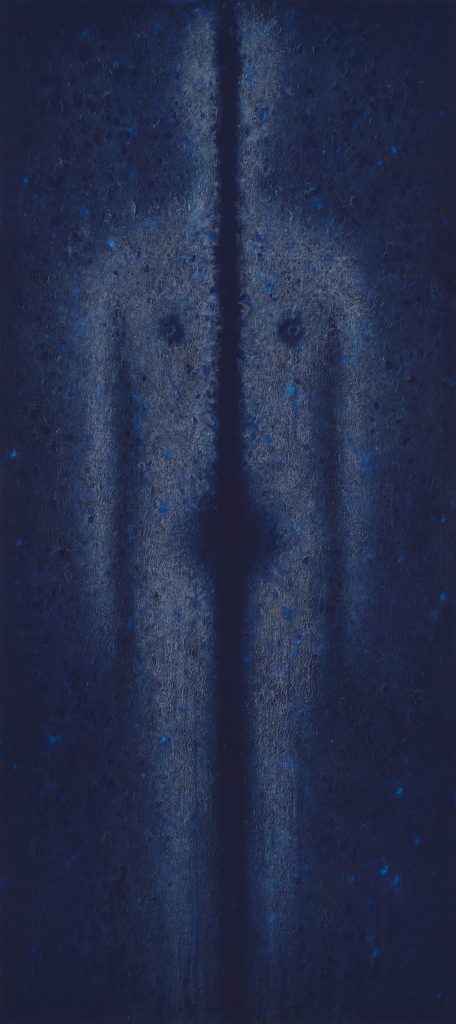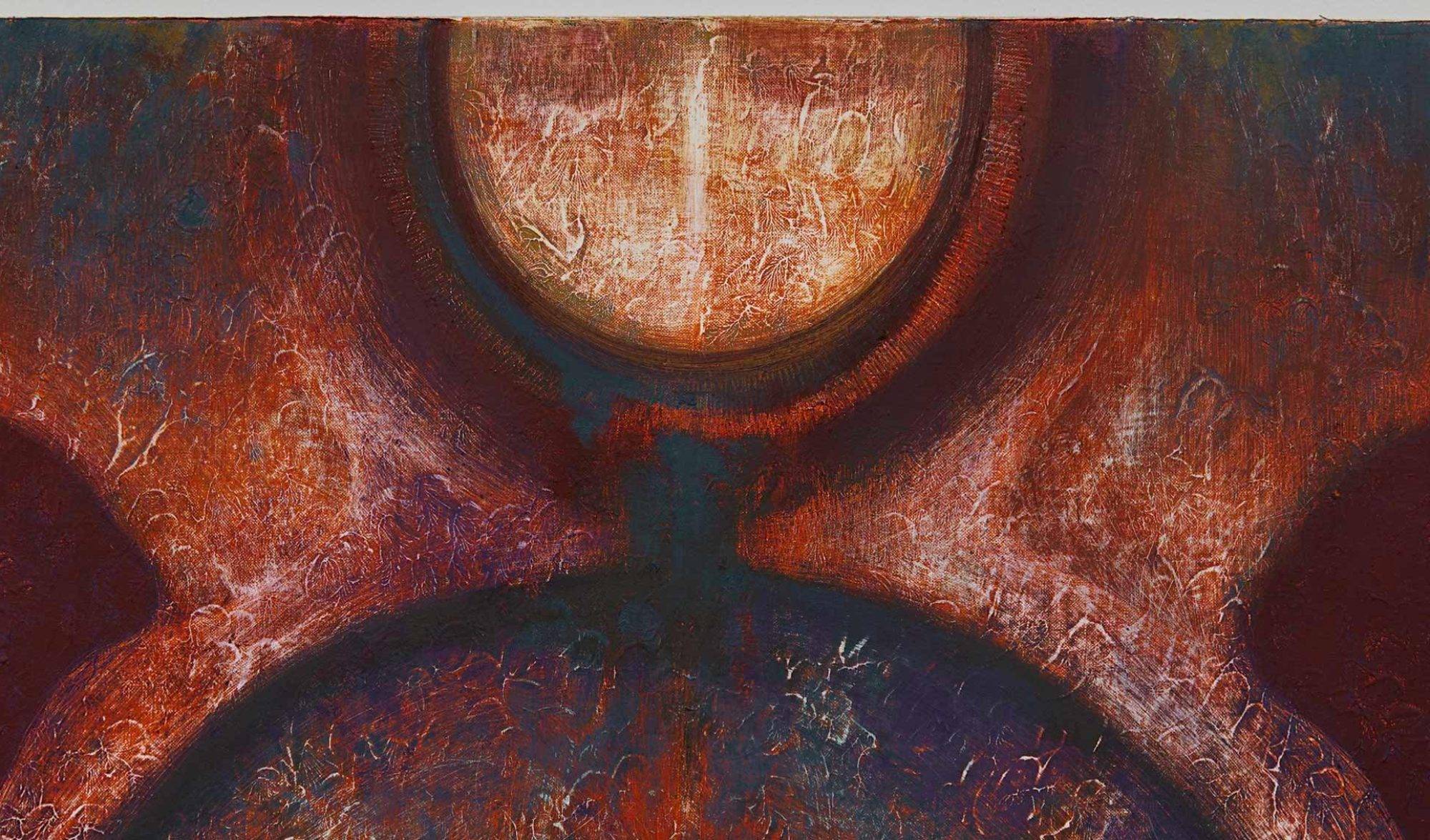Across nine exquisite and meticulously executed paintings—made with media such as oil, acrylic, colored pencil, and pastel—at Peter Blum Gallery, Luisa Rabbia offered up an original vision of the human body rapturously transfigured. Her works give off an “oceanic feeling,” as French writer Romain Rolland characterized the effect, or, as Sigmund Freud called it in response to Rolland, a “primitive ego-feeling,” a sensation preserved from infancy, when the ego has not yet come into its own and is only beginning to emerge from the id. The imagery in Rabbia’s show, according to the press release, alluded to “interconnected natural processes such as mitosis, forming a thread between microcosms and macrocosms and interweaving them in a nebulous primordial state.” One can easily envision the artist’s colors as biological cells, each one carrying sundry chromosomes of light. But such metaphors are also steeped in the spiritual, as Ecstasy, 2019, a richly rendered canvas depicting a cobalt-colored body seemingly disintegrating into—or becoming one with— the great void of the universe, suggests. “The deeper the blue the more it beckons man into the infinite, arousing a longing for purity and the supersensuous,” Wassily Kandinsky wrote. As André Breton once said, “The marvelous is always beautiful.”
I mention Breton and Kandinsky because Rabbia’s figures have solid roots in classical modernism and to my mind are a consummate statement on the unconscious or, more precisely, what psychoanalyst Viktor Frankl referred to as the “spiritual unconscious.” Blue dominated in virtually every one of Rabbia’s canvases, signaling their affinity with other famous artworks that explored or meditated upon, per Kandinsky, this “color of the heavens,” such as Odilon Redon’s numinous drawing of a woman’s head in profile, La cellule d’or (The Golden Cell), 1892, or Ad Reinhardt’s sublimely nonobjective blue paintings. Rabbia’s radiant Whole, 2019, features an armless, legless ur-human, perhaps freshly birthed from the primeval abyss, who levitates before a variegated backdrop of blood red. The being’s torso seems more shadow than flesh; it is painted in a shade of ultramarine that verges on jet. The subject is a fathomless window, godlike in its way—similar to the figure in Mitos, 2018, a celestial creature split in two who appears to be made from an endless number of particles. One cannot tell if this beryl-hued life- form is falling apart or coming together. It is a thing of infinite flux, mysterious and ancient—like the cosmos itself.
The indigo fetal figures of Poles, 2020, unite inside a giant womb that floats within an amorphous Cimmerian field. The color black was almost as present as blue in all of Rabbia’s imagery—emphatically so in Threshold, 2019, a rendering of a spectral silhouette crammed inside a narrow, claustrophobic space. Yet this ambiguous figure plays tricks on the eye, for it appears simultaneously concave and convex—as dense as a marble tombstone and as shallow as an open grave. “Like a nothingness after sunset, black sounds like an eternal silence, without future or hope,” Kandinsky wrote. Not so in Rabbia’s case—her blacks sing, albeit mournfully. The artist’s paintings are successful “compromise formations,” as Freud said of dreams, that reconcile the life and death instincts: the former integrative, the latter disintegrative. One of thereasons her works are emotional as well as aesthetic masterpieces, not to say triumphs of the imagination, is that they make use of the modernist heritage in a singular way. She makes the dialectical terseness of abstract art wonderfully capacious and resoundingly clear.
Donald Kuspit

